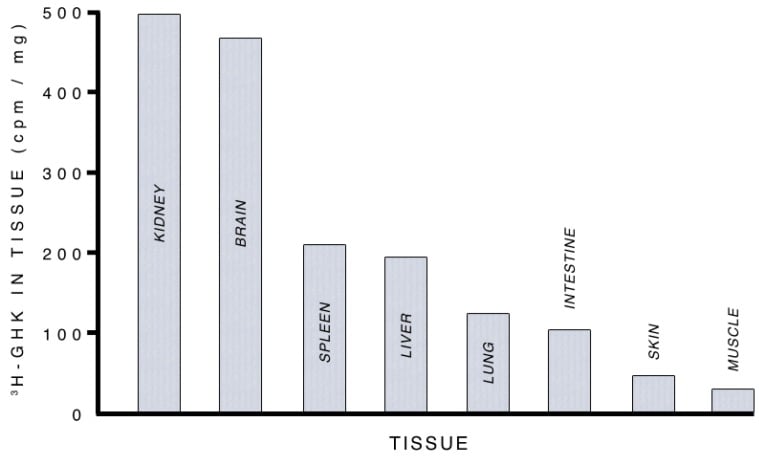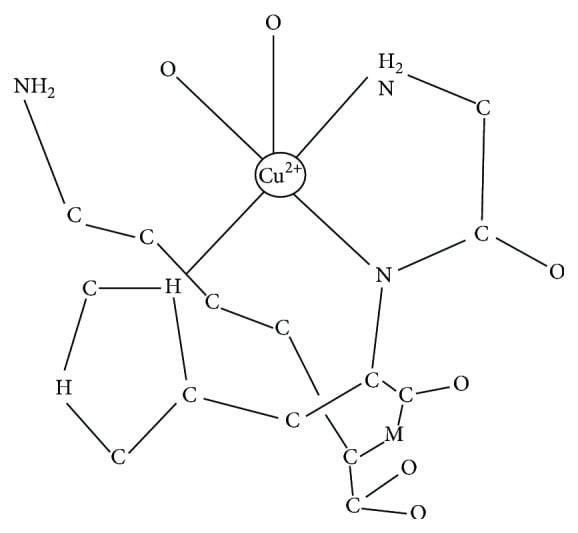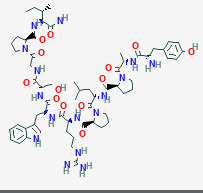GHK-CU Spray – 12MG, 30ML Bottle
$129.99 Original price was: $129.99.$69.99Current price is: $69.99.
-
- Bottle = 30ml
THIS PRODUCT IS INTENDED AS A RESEARCH CHEMICAL ONLY. These statements, products have not been evaluated by the FDA, These products are not intended to diagnose treat prevent or cure any disease. Research Chemicals ARE NOT FOR HUMAN CONSUMPTION
Does the oral spray require refrigeration?
Oral sprays do not require refrigeration but they should be stored in a cool place.
Regarding Zelle Orders
If you pay with Zelle you will receive a Buy 1 Get 1 Free. Do not email us regarding what you saw in the shipping email and please do not follow up with emails the same day regarding if we have received payment. If your order has been pending or not shipped for a few days you may email us at evolving.nation.sales@gmail.com.
Follow the instructions closely at checkout and do not put your order number in the memo.
Research Use Only
Do not email us for dosing instructions, our products are for research lab use only.
Shipping Times
Orders are usually packed and shipped the same day. We don’t offer express shipping.
GHK-Cu
GHK-Cu is a naturally occurring peptide first isolated from human blood plasma. It has since been identified in urine and saliva as well. Research into GHK-Cu has found the short peptide to have substantial benefits in wound healing and immune function. It has anti-aging properties and has been found to suppress free-radical damage, increase protein synthesis, fight bacteria, and increase the health of skin and skin fibroblasts.
Structures
Sequence: Gly-His-Lys.Cu.xHAc
Molecular Formula: C14H23CuN6O4
Molecular Weight: 340.384 g/mol
PubChem CID: 73587
CAS Number: 89030-95-5
Source: PubChem
Source: PubChem
GHK-Cu Research
1. GHK-Cu and Skin Healing
GHK-Cu is a natural part of human blood and, as such, has been found to play an integral role in skin regeneration pathways. Research in skin cultures has found that GHK stimulates the synthesis and breakdown of collagen, glycosaminoglycans, and other extracellular matrix components like proteoglycans and chondroitin sulfate. At least part of this effect is mediated through the positive recruitment benefits that GHK-Cu has on fibroblasts, immune cells, and endothelial cells. The peptide draws these cells to the site of injury and appears to coordinate their activity in repairing the damage[1].
GHK-Cu is a common component of skin-care and cosmetic products. It improves elasticity of the skin while tightening and firming. It has also been shown to reduce damage due to sunlight, reduce hyperpigmentation, and reduce the appearance of fine lines and wrinkles[1]. The ability of GHK-Cu to modulate collagen synthesis is important in reducing the appearance of scars, preventing hypertrophic healing from taking place, smoothing rough skin, and repair the structure of aged skin. These roles of GHK-Cu are mediated partly though its ability to boost levels of transforming growth factor-Β[2]. It is likely that the peptide works through several different biochemical pathways and that it has effects and the level of gene transcription[3].
Research in mice shows that GHK-Cu increases the rate of healing following burn by as much as 33%. It appears that besides recruiting immune cells and fibroblasts to the site of injury, GHK-Cu also encourages the growth of blood vessels[4]. Burned skin is often slow to regrow blood vessels due the cauterization effect, so these findings open up a new pathway for improving wound care in burn units and accelerating healing.
2. GHK-Cu and Bacteria
The invasion of tissue by foreign pathogens is one of the primary reasons that wounds are slow to heal or do not heal at all. Bacterial and fungal infections are particularly problematic in burn patients and in those with compromised immune systems (e.g. diabetes, HIV). GHK-Cu, when combined with certain fatty acids, creates a potent antimicrobial compound that is active against a number of bacteria and fungi known to complicate wound healing[5].
Research in diabetic patients has shown that GHK-Cu is superior to standard care regimens alone in the treatment of diabetic ulcers. Patients given both standard care and GHK-Cu showed a ~40% increase in wound closure and a 27% decrease in rates of infection compared to control groups[6]. Similar results were seen in patients with ischemic open wounds[7].
3. GHK-Cu, Cognition and Nervous System Function
The death of neurons due to degenerative diseases like Alzheimer’s is poorly understood. This makes it difficult to develop treatments and those that are available are generally of limited efficacy. Research, however, suggests that GHK-Cu can counter the age-associated decline in neuron function that often underlies these diseases. Research shows that GHK-Cu can improve angiogenesis in the nervous system, boost nerve outgrowth, and reduce inflammation in the central nervous system. There is even evidence that GHK-Cu can reset pathological gene expression and help to recreate a state of health in dysfunctional systems[8].
GHK-Cu is found in high concentrations in the brain, though levels of the peptide decline with age. There is a thought, among scientists, that GHK-Cu may protect nervous system tissues against natural insults such as gene dysregulation and that it is the decline in GHK-Cu with age, and not the onset of new disease processes, that actually leads to neurodegeneration.

GHK-Cu Levels in various tissues
Source: PubMed
Research in rats indicates that one possible mechanism by which GHK-Cu protects brain tissue is by preventing apoptosis. This action appears to be mediated through the well-known miR-339-59/VEGFA pathway, which is active following brain bleeds and stroke. In the rat models, GHK-Cu improves neurological deficits in the brain, reduce swelling, and inhibited the death of neurons that is commonly bought about by overexpression of miR-339-5p[9].
4. GHK-Cu and Side Effects of Chemotherapy
Research in mice shows that GHK-Cu can protect the lungs against fibrosis that occurs following therapy with the cancer drug bleomycin[10]. This could pave the way for using GHK-Cu as a chemotherapy adjuvant that allows doses of these life-saving medications to be increased without risk of increased side effects. The study when a step farther, than usual, by identifying the likely pathway by which GHKC-Cu protects against fibrosis. It appears that the peptide regulations TNF-alpha dn IL-6 levels, both of which act as inflammatory molecules and affect the extracellular matrix and smooth muscle of the lung. By reducing inflammation in the lungs, GHK-Cu prevents fibrotic remodeling from taking place and improves collagen deposition.
Similar benefit of GHK-Cu in protecting lungs was found in mouse models of acute respiratory distress syndrome (ARDS), an inflammatory lung condition that can develop rapidly and be fatal. ARDS is associated with injury, infection, and certain drugs like those used in chemotherapy. Once again, GHK-Cu appeared to mediate its effects through decreased TNF-alpha and IL-6 expression[11].
5. GHK-Cu and Pain Reduction
In rat models, the administration of GHK-Cu had a dose-dependent effect on pain-induced behavior. The peptide appears to have analgesic effects that are produced through increased levels of the natural painkiller L-lysine[12]. Similar research has found that the peptide can also increase levels of L-arginine, another analgesic amino acid[13]. These findings open up new avenues for pain control that do not rely on addictive opiate medications or NSAIDs, which have been found to have negative effects on the heart.
GHK-Cu exhibits minimal side effects, low oral and excellent subcutaneous bioavailability in mice. Per kg dosage in mice does not scale to humans. GHK-Cu for sale at Peptide Sciences is limited to educational and scientific research only, not for human consumption. Only buy GHK-Cu if you are a licensed researcher.
.Article Author
The above literature was researched, edited and organized by Dr. Logan, M.D. Dr. Logan holds a doctorate degree from Case Western Reserve University School of Medicine and a B.S. in molecular biology.
Scientific Journal Author
Loren Pickart, Ph.D. has released 109 publications and is developing patents and analyzing GHK’s effects on human gene expression of 4,192 genes. In addition to GHK’s published potential uses on skin inflammation, metastatic cancer and COPD, it appears to have beneficial effects on other tissue systems such as the nervous system, gastrointestinal system, and mitochondrial system. His brief but detailed autobiography dives into the motivations and background behind his dedicating to skin, anti-aging, and life-long training.
Loren Pickart, Ph.D is being referenced as one of the leading scientists involved in the research and development of GHK-Cu. In no way is this doctor/scientist endorsing or advocating the purchase, sale, or use of this product for any reason. There is no affiliation or relationship, implied or otherwise, between Peptide Sciences and this doctor. The purpose of citing the doctor is to acknowledge, recognize, and credit the exhaustive research and development efforts conducted by the scientists studying this peptide. Loren Pickart, Ph.D is listed in [1][3] and [8] under the referenced citations.
Referenced Citations
- [1] L. Pickart, J. M. Vasquez-Soltero, and A. Margolina, “GHK Peptide as a Natural Modulator of Multiple Cellular Pathways in Skin Regeneration,” BioMed Res. Int., vol. 2015, p. 648108, 2015. [BioMed Research International]
- [2] A. Gruchlik, E. Chodurek, and Z. Dzierzewicz, “Effect of GLY-HIS-LYS and its copper complex on TGF-β secretion in normal human dermal fibroblasts,” Acta Pol. Pharm., vol. 71, no. 6, pp. 954–958, Dec. 2014. [PubMed]
- [3] L. Pickart and A. Margolina, “Regenerative and Protective Actions of the GHK-Cu Peptide in the Light of the New Gene Data,” Int. J. Mol. Sci., vol. 19, no. 7, Jul. 2018. [PubMed]
- [4] X. Wang et al., “GHK-Cu-liposomes accelerate scald wound healing in mice by promoting cell proliferation and angiogenesis,” Wound Repair Regen. Off. Publ. Wound Heal. Soc. Eur. Tissue Repair Soc., vol. 25, no. 2, pp. 270–278, 2017. [PubMed]
- [5] M. Kukowska, M. Kukowska-Kaszuba, and K. Dzierzbicka, “In vitro studies of antimicrobial activity of Gly-His-Lys conjugates as potential and promising candidates for therapeutics in skin and tissue infections,” Bioorg. Med. Chem. Lett., vol. 25, no. 3, pp. 542–546, Feb. 2015. [Science Direct]
- [6] G. D. Mulder et al., “Enhanced healing of ulcers in patients with diabetes by topical treatment with glycyl-l-histidyl-l-lysine copper,” Wound Repair Regen. Off. Publ. Wound Heal. Soc. Eur. Tissue Repair Soc., vol. 2, no. 4, pp. 259–269, Oct. 1994. [PubMed]
- [7] S. O. Canapp et al., “The effect of topical tripeptide-copper complex on healing of ischemic open wounds,” Vet. Surg. VS, vol. 32, no. 6, pp. 515–523, Dec. 2003. [PubMed]
- [8] L. Pickart, J. M. Vasquez-Soltero, and A. Margolina, “The Effect of the Human Peptide GHK on Gene Expression Relevant to Nervous System Function and Cognitive Decline,” Brain Sci., vol. 7, no. 2, Feb. 2017. [PubMed]
- [9] H. Zhang, Y. Wang, and Z. He, “Glycine-Histidine-Lysine (GHK) Alleviates Neuronal Apoptosis Due to Intracerebral Hemorrhage via the miR-339-5p/VEGFA Pathway,” Front. Neurosci., vol. 12, p. 644, 2018. [PubMed]
- [10] X.-M. Zhou et al., “GHK Peptide Inhibits Bleomycin-Induced Pulmonary Fibrosis in Mice by Suppressing TGFβ1/Smad-Mediated Epithelial-to-Mesenchymal Transition,” Front. Pharmacol., vol. 8, p. 904, 2017. [PubMed]
- [11] J.-R. Park, H. Lee, S.-I. Kim, and S.-R. Yang, “The tri-peptide GHK-Cu complex ameliorates lipopolysaccharide-induced acute lung injury in mice,” Oncotarget, vol. 7, no. 36, pp. 58405–58417, Sep. 2016. [PubMed]
- [12] L. Ð. Sever’yanova and M. E. Dolgintsev, “Effects of Tripeptide Gly-His-Lys in Pain-Induced Aggressive-Defensive Behavior in Rats,” Bull. Exp. Biol. Med., vol. 164, no. 2, pp. 140–143, Dec. 2017. [Springer]
- [13] L. Ð. Sever’yanova and D. V. Plotnikov, “Binding of Glyprolines to L-Arginine Inverts Its Analgesic and Antiagressogenic Effects,” Bull. Exp. Biol. Med., vol. 165, no. 5, pp. 621–624, Sep. 2018. [PubMed]
ALL ARTICLES AND PRODUCT INFORMATION PROVIDED ON THIS WEBSITE ARE FOR INFORMATONAL AND EDUCATIONAL PURPOSES ONLY.
The products offered on this website are furnished for in-vitro studies only. In-vitro studies (Latin: in glass) are performed outside of the body. These products are not medicines or drugs and have not been approved by the FDA to prevent, treat or cure any medical condition, ailment or disease. Bodily introduction of any kind into humans or animals is strictly forbidden by law.







